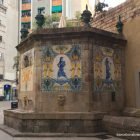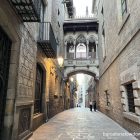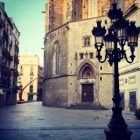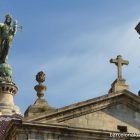Barcelona’s medieval Jewish Quarter is a small area of narrow streets and alleyways tucked away behind the Cathedral, in the oldest part of the city centre.
The area was abandoned after the pogroms of 1391, almost a hundred years before the Spanish Inquisition and the expulsion of the Jews from Spain.
Today, you can learn about the history of the city’s Jewish population at the MUHBA El Call museum, see the remains of historic buildings including two medieval mikvehs and visit the Shlomo Ben Adret Synagogue, believed to be one of the oldest synagogues in Europe.
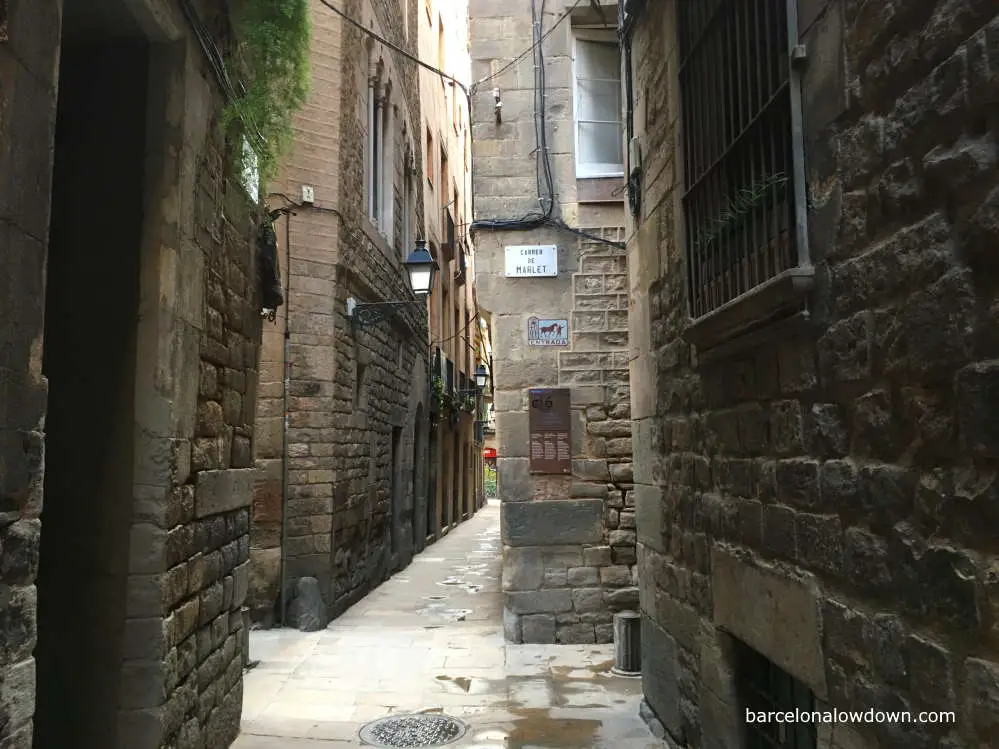
Histrory of Barcelona’s Jewish Quarter
Archaeological evidence suggests that there was a Jewish community in Barcelona as early as the first century AD, shortly after the city was founded. At first, Jews were allowed to live wherever they chose but during the Middle Ages, they were confined to a small area just inside the city walls called El Call.
Unlike other citizens, the Jewish population paid taxes directly to the Crown. In return, they received some degree of protection and by the fourteenth century, their numbers had grown to an estimated four thousand people. The total population of Barcelona at the time was around twenty-six thousand.
The increase was partly due to an influx of people who had been expelled from France. The newcomers were housed in a second, smaller Jewish Quarter, called El Call Menor, which was built just outside the city walls. The only way between the two areas was through Castell Nou (new castle), one of four fortified gateways that gave access to the city.
During the fourteenth century, Europe was ravaged by the Bubonic Plague (also known as the Black Death). It has been estimated that the population of Spain fell from six million to around two and a half million people. People looked for someone to blame and the obvious target was the Jews who were accused of poisoning the city’s water supplies.
In August 1391, spurred on by the Roman Catholic church, a series of attacks or pogroms took place in the Jewish quarters of cities across Spain. One of the most notorious pogroms took place in Barcelona.
On the 5th of August, Saint Dominic’s day, angry mobs assaulted the Jewish Quarter. An estimated three hundred people were brutally murdered. The rest were either forced to convert to Christianity or leave Barcelona. Many fled north to France or to the kingdom of Navarra.
Many of the buildings in El Call were destroyed. Those that remained were abandoned and became property of the King, including the Jewish cemetery on Montjuïc.
During the years which followed the remaining Jews, most of whom had converted to Christianity, were treated with suspicion and under constant scrutiny.
In 1478 the Catholic Monarchs instigated the Spanish Inquisition which aimed to seek out heretics and paid special attention to the so-called new Christians. Finally, in 1492, the Alhambra decree was passed ordering Jews to either convert to Christianity or leave Spain.
Guided Tours
If you are interested in learning more about the history of El Call, Get Your Guide offers two-hour walking tours with local guides. Find out more >>

What to See in Barcelona’s Jewish Quarter
1. Sinagoga Mayor (Shlomo Ben Adret Synagogue)
During the fourteenth century, there were four synagogues in Barcelona, three in El Call Mayor, and one in El Call Menor.
After the assault of the Jewish quarter in 1391, the synagogues became the property of the king and were used for other purposes. The church of Sant Jaume, Carrer de Ferran number 28, is believed to have been built on the remains of one of the synagogues.
Until recently, the exact location of the other synagogues was unknown. Then, in 1987, historian Jaume Riera began investigating the location of the Sinagoga Mayor (Greater Synagogue). Research based on the reconstruction of a route followed by a Jewish tax collector led him to a rubble-filled basement at number five Carrer de Marlet.
When the building was put up for sale in 1995, retired businessman Miguel Iaffa purchased it and set up an association to excavate and restore the synagogue.
In 2002, the Shlomo Ben Adret Synagogue was consecrated and opened to the public as a museum. Occasional religious ceremonies also take place.
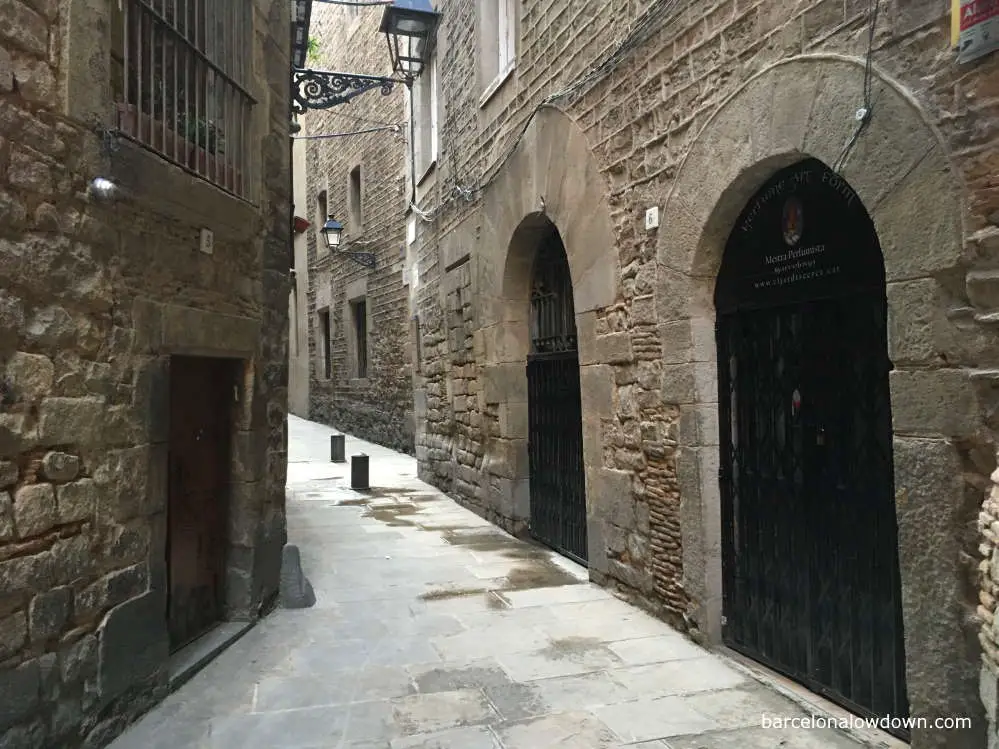
Location
Carrer de Marlet 5, Barcelona
Opening Times
Winter
Monday – Friday 11:00 – 17:30
Saturday: Closed
Sunday 11:00 – 15:00
Summer
Monday – Friday 10:30 – 18:30
Saturday: Closed
Sunday 10:30 – 14:30
Entry Fee
Adults €2.50
The synagogue is closed on public holidays and schedules sometimes vary, check timetables here.
2. Jewish History Museum (MUHBA El Call)
Housed in a building that once belonged to sailmaker Yusef Bonhiac, the MUHBA El Call museum opened in 2015.
The museum recounts the history of the Jewish Quarter and contains a small collection of ceramics and other archaeological remains.
Location
Placeta de Manuel Ribé, Barcelona
Opening Times
Wednesday 11:00 – 14:00
Saturday and Sunday 11:00 – 19:00
Entry Fee
Standard €2
Reduced €1.50 (includes 16 – 29 years and >65 years)
Under 16 years and Barcelona Card holders – FREE ENTRY
Tips:
MUHBA El Call can be visited free of charge every Sunday afternoon from 15:00 to 20:00 and all day on the first Sunday of the month.
If you will also be visiting MUHBA Plaça del Rei (see below), you should either purchase your ticket online or visit there first because the ticket includes entry to both museums.
3. Mikvehs on Carrer de la Palla
Exploring the Gothic Quarter is a bit like unwrapping a parcel. Over the centuries, buildings have been built one on top of the other and it’s not uncommon to find Roman and Medieval structures that have been incorporated into newer buildings. Perhaps the best-known examples are the Temple of Augustus and several stretches of the Roman city walls.
Two buildings on Carrer de la Palla contain the remains of what are believed to have been mikvehs (ritual baths).
The Caelum cake shop at number 8 has a small basement where they serve coffee and cakes. The walls of the basement are all that remains of the women’s baths.
The remains of the men’s baths are inside the Casa Journet furniture shop on the other side of the street at number 10.
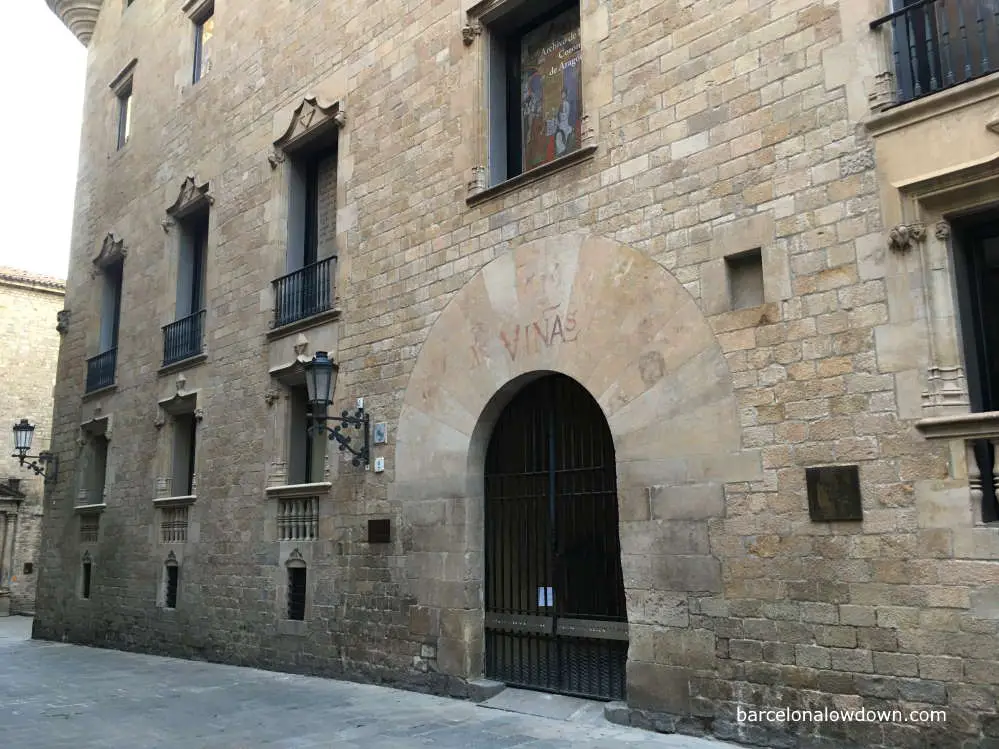
4. Stone Plaque dedicated to Samuel ben Itshaq ha-Sardí
When the building at Carrer Martlet 1 was built in 1820 its owners decided to include a stone with an inscription in Hebrew that was found on the site. They also installed a large plaque with an incorrect translation of the text in Spanish.
During the 1980s the stone was replaced by a replica, the original is preserved in a storeroom at the MUHBA.
5. Mezuzah Holes
A mezuzah is a small tubular case containing a handwritten scroll that is traditionally hung from the doorways of Jewish homes. People touch the mezuzah upon entering and leaving the building.
Several buildings in the Jewish Quarter have small notches carved into the door frames which would originally have contained mezuzah. The easiest one to find is outside the MUHBA El Call museum.
6. Remains of Castell Nou
During the 10th century, Barcelona was on the frontline between the territories controlled by the Carolingian Empire and the Caliphate of Cordoba.
From 978 to 985 Barcelona suffered a series of attacks which culminated in a five-day siege after which the city was ransacked and a large part of the population was either massacred or taken hostage.
As a result of the attacks, four castles were built to defend the city gates. Castell Nou was built at the entrance which eventually became the gateway between Call Mayor and Call Menor.
When the Jewish quarter was assaulted in 1391, residents took refuge in the castle which was badly damaged in the attacks. The building was later converted into a prison before being demolished during the nineteenth century.
Today, all that remains of the castle is a small Romanesque style window which can be seen above the shopfront of Sombrerería Obach, an old fashioned hat shop at number 2 Carrer del Call.
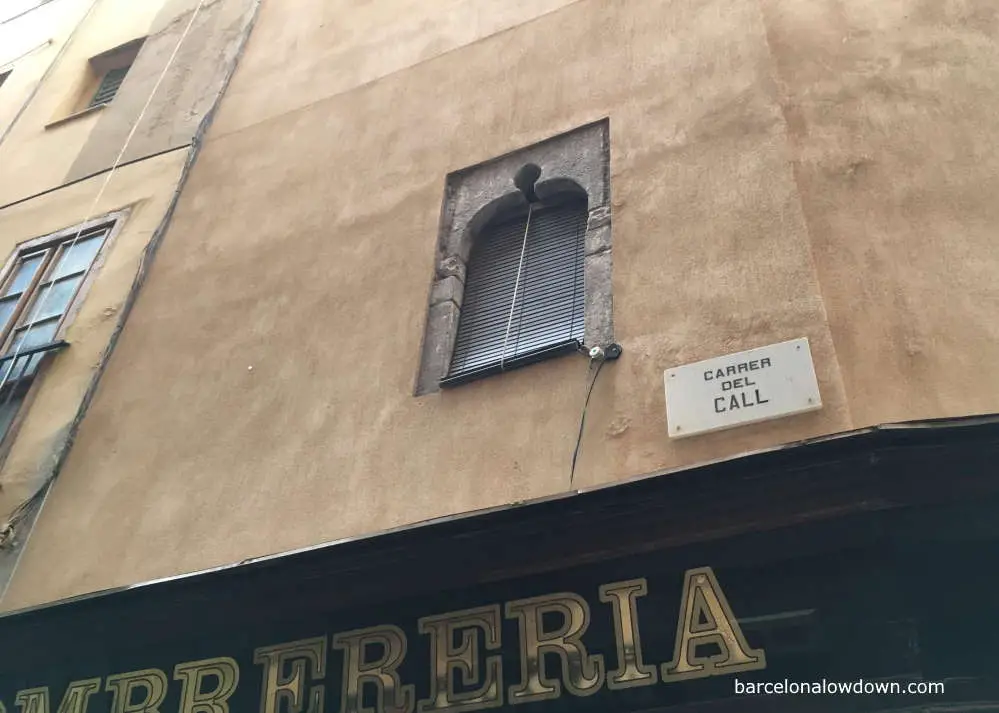
Beyond the Jewish Quarter
7. Palau Lloctinent
Located just outside El Call, Palau Lloctinent was built during the sixteenth century as an annexe to the Palau Reial Major, home of the counts of Barcelona.
Originally built for the Viceroy, for many years it was the headquarters of the Spanish Inquisition in Barcelona. The building combines elements of Gothic and Renaissance architecture and was constructed using stone from Montjuïc, including gravestones taken from the Jewish cemetery.
A total of thirty-three stones with Hebrew engravings have been identified, some of which are visible in the building´s façade although they’re hard to spot unless you know where they are. Ten of the stones are marked in this photo from the MNAC museum website.
8. Barcelona History Museum (MUHBA Plaça del Rei)
The Barcelona History Museum is housed in the Palau Reial Major and is a fascinating place to discover the Roman and Medieval history of the city.
When visiting the museum, you begin by taking an elevator down to the remains of the Roman city of Barcino. The Roman remains include villas, a winery, laundry, fish drying plant, and other buildings. Amongst the remains, you will see a few stones with Hebrew inscriptions incorporated into walls.
From here you continue up into the medieval buildings which house an exhibition that traces the history of Barcelona from the eighth to the thirteenth century. The museum’s collection includes a stone slab with an epitaph written in Hebrew in memory of Salomó Grasià.
Location
Plaça del Rei
Opening Times
Tues – Saturday 10:00 – 19:00
Sunday 10:00 – 20:00
Entry Fee
Standard €7 Online ticket price €6.65
Reduced €5 (includes 16 – 29 years and >65 years)
Under 16 years and Barcelona Card holders – FREE ENTRY
Tips:
The MUHBA Plaça del Rei museum can be visited free of charge every Sunday afternoon from 15:00 to 20:00 and all day on the first Sunday of the month.
The ticket includes entry to several other MUHBA sites including the MUHBA El Call
Read my article about the MUHBA Plaça del Rei here >>
9. Jewish Cemetery on Montjuïc
Before the Jews were confined to El Call, they lived in small communities throughout Barcelona and in the surrounding area where they owned farmland and vineyards.
One of the larger communities was in what is now the Sants-Montjuïc district. The name Montjuïc is derived from the words muntanya jueva, Jewish mountain in Catalan.
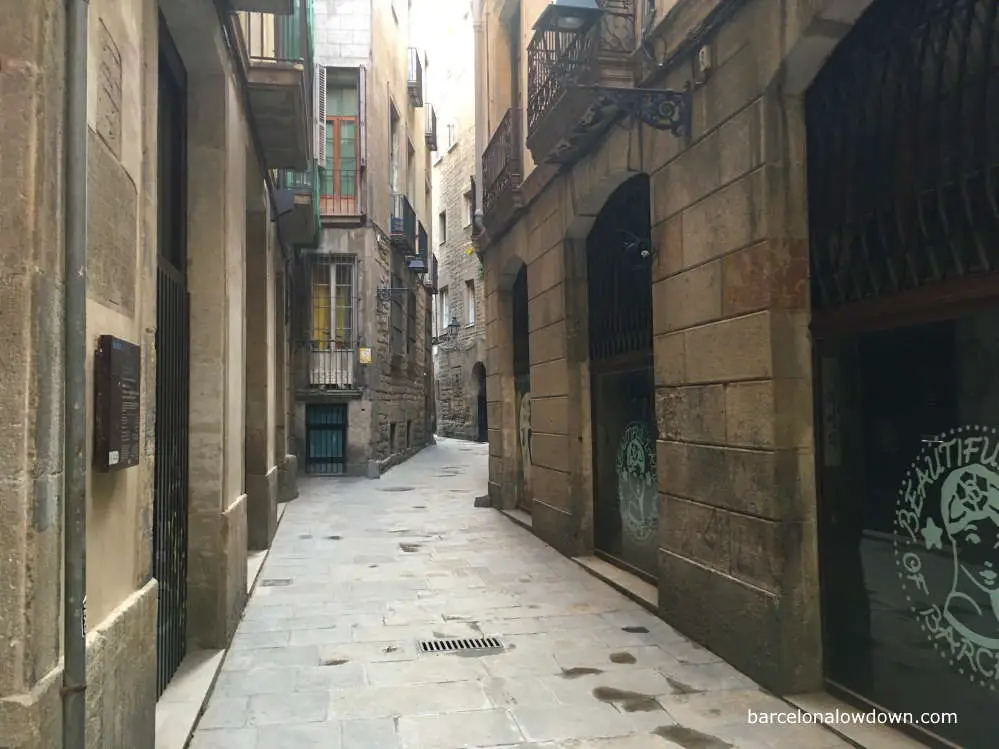
In 1945, when land was cleared to build a shooting range on Montjuïc, the remains of a ninth-century Jewish necropolis were discovered. Initially, 171 graves were uncovered, followed by a further 557 during the second excavation in 2001.
Located on the hillside below the Mirador de l’Alcalde viewpoint and Jardins de Joan Brossa, the site of the cemetery has been declared a place of cultural interest and is now protected from future development.
The cemetery is marked on Google maps, but no physical signs or monuments indicate the location. In fact, to be honest, once you get there, there’s nothing to really see. A small area has been fenced off, the rest is wooded parkland crisscrossed by footpaths with good views of the city and El Port Vell.
This website shows the exact location of the cemetery plus more information about its history and the excavations.
To get there, take bus number 150 from Plaça d’Espanya up to the castle which is a short walk from the viewpoint. Alternatively, you could take the funicular from Parallel followed by either bus number 150 or the cable car.
A taxi from near El Call should take approximately twenty-five minutes.
Important: If you decide to take a taxi, make sure the driver understands where you want to go since Barcelona’s largest cemetery El Cementiri de Montjuïc is on the other side of the mountain.
Walking Tours
The MUHBA has published a suggested walking route that you can download free of charge here. Numbered plaques along the route help you find where you are on the map.
If you prefer to take a guided tour, Get Your Guide offers two-hour walking tours with local guides. Find out more >>
Where is the Jewish quarter in Barcelona?
The Jewish Quarter is located in the oldest part of Barcelona city centre between the Town Hall and Barcelona Cathedral.
The area lies between Carrer dels Banys Nous, Carrer del Call, Carrer del Bisbe, and Carrer de Sant Sever.
The nearest metro stops are Jaume I (L4 – yellow line) and Liceu (L3 – green line).
The streets and alleyways are very narrow and totally inaccessible to cars or taxis.
If you are taking the Bus Turistic hop on hop off sightseeing bus, the nearest stop is Barri Gòtic on the red route.
Map of Barcelona’s Jewish Quarter
Plaça del Rei, Barcelona
Ctra. de Montjuïc, 43, Barcelona
Carrer dels Banys Nous, 10, Barcelona
Carrer de la Palla, 8, Barcelona
Carrer del Call, 1, Barcelona
Palau Reial Major, 08002 Barcelona, España
Placeta de Manuel Ribé, 08002 Barcelona, España
Carrer de Marlet, 1, Barcelona
Carrer de Marlet, 5, Barcelona

